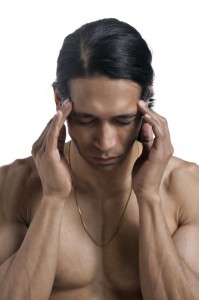Concussion Prevention
In my first post on concussion I wrote about how I treat patients with post-concussion syndromes and which treatments I have found the most effective. I the more I have read about concussion the more disappointed I was getting that there was minimal effort to prevent incidence of concussion from occurring in the first place. Articles on concussion prevention mostly include buying better equipment and early detection. There are finally programs being developed to prepare the body as well as possible to handle the forces of sport where concussion is a possibility.
One of my patients who was a researcher and inventor once said “We can solve any problem as long as we ask the right questions.” I think the right questions are starting being asked by researchers-who is vulnerable to concussions and why? Little can be done beyond equipment to stop a lacrosse ball form hitting a player in the head because it happens so fast. But how can coaches and trainers prepare an athletes body as much as possible to survive contact? One 2014 study, in the Journal of Primary Prevention, sought to answer the question of whether measuring neck strength could be predictive of a greater chance of concussion. For the the 2010 and 2011 season athletic trainers measured the neck strength of athletes during the preseason of 6,704 high school boys’ and girls’ soccer, basketball, and lacrosse as well as gathering concussion incidence data during those seasons. The clear conclusion was those with weaker necks suffered a higher incidence of concussion. “For every one pound increase in neck strength, odds of concussion decreased by 5 %.” The question remains how can the neck be strengthen effectively to prevent concussion?
I was pleasantly surprised to find a trainer focused on concussion prevention abut 2 miles from my East Aurora office! Coach Steve Helmicki the founder of Primordial Strength Systems has developed an Anti-Concussion program around strengthening the neck and preparing the body for contact. Coach Helmicki is a former champion power lifter and has trained an endless list of pro, collegiate high school athletes. When I went to speak with him about his Anti-Concussion program I was struck by many the letters of appreciation covering his wall.
Dr. Luke: When lead you to develop a concussion prevention program?
Coach Helmicki: I noticed about 15 years ago, neck exercise machines and neck training was dropped from the high school strengthening programs. It was mostly for liability reasons I believe. They were strengthening the rest of the body and the neck became the weak link and that happens to be connected to the head. The body is not able to dissipate the force of contact through the neck or any part of the body if it hasn’t been trained properly to receive that force.
Dr. Luke: What is your philosophy on training?
Coach Helmicki: I have developed Primodial Strength Systems based on the variable method, where I I take people through an exercise with increasing weight while I watch their form and in particular their speed of contraction. I want to increase the speed of contraction with every workout without destroying their muscle tissue. Faster speed of muscle contraction translates into more explosive power for the athlete. Its not about an amount of weight a person can push but how fast can a muscle go from a relaxed state to full contraction and then relaxation again. I have worked using this method directly with high school teams, professional teams and the Marines and reduced their incidence of injury during competition and their training while significantly improving performance.
Dr. Luke: How does the variable training method reduce the chance of injury?
Coach Helmicki: My theory is the type of muscle tissue that is developed in this way can dissipate the force of contact better than a rigid muscle. So I try to develop the body and the neck as much as possible to that end.
Dr. Luke: What is the exercise progression of your Anti-Concussion Program?
Coach Helmicki: I always assess an athlete to avoid further injury and not to overload their system. In fact I am assessing them at every exercise. I look for any degrading of their form and change their workout accordingly. I progressively strengthen the neck in all planes but take care to strengthen the rest of the body as well. Because its so individual, its difficult just to give a workout without giving some coaching but I do my best in my Anti-Concussion Manuals. I do have some examples on youtube as well.
Dr. Luke: What are some other training methods you employ in your Anti-Concussion Program?
Coach Helmicki: I teach my athletes to develop the skill, which is borrowed form martial arts training, of breathing out with contact to help dissipate the force during competition. Rigid muscles and body will retain the force and cause injury. I will get as sport specific as possible and when they are ready I have them hit a heavy bag with their body from progressively further away on and increasingly heavy bag.
Supporting Coach Helmicki’s training is a study that showed a reduced reaction time for the functional head-protective response, which is the time it takes an athlete to raise their hands from their waist to protect their head, was a strong indicate for future concussion. Post concussion, this reaction time is reduced and delayed in returning which can lead to future concussion if the athlete cannot lift their hands fast enough to protect their head.
With contact sports there is no way to completely reduce your risk to zero. Making sure your neck is strong and that you train for contact in your specific sport can at least help prevent concussion.
















